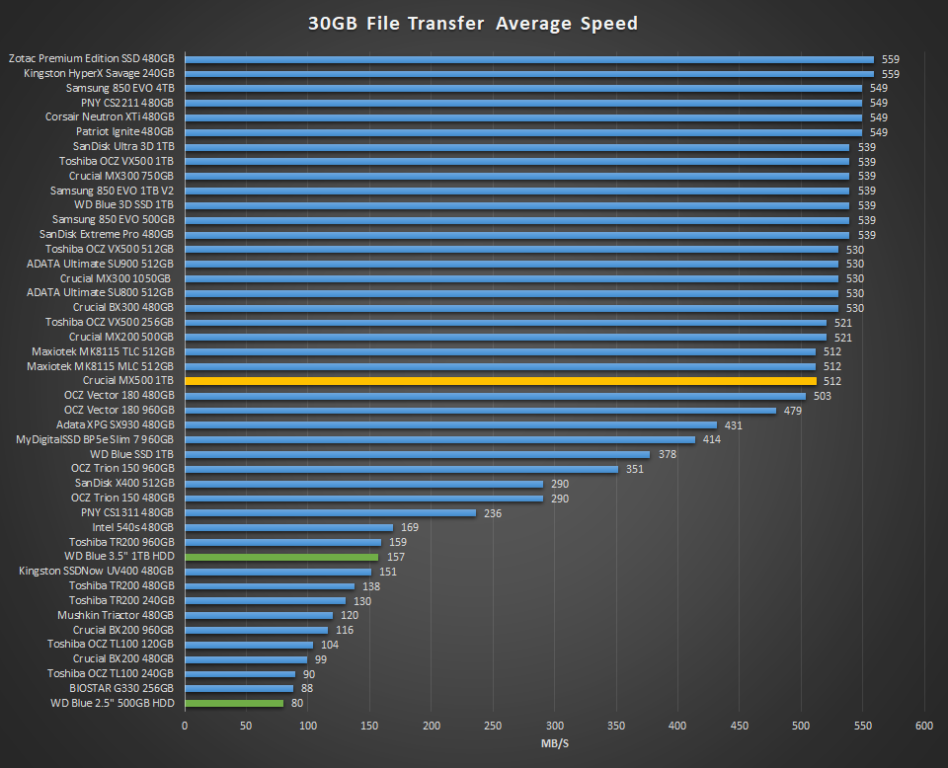REAL WORLD FILE TRANSFER
We also wanted to see how performance was in a real-world use when transferring large files to the SSD. For this test, we are going to simply stress write performance by transferring over a 30GB folder of movies off of a 512GB Samsung 950 Pro to the test SSDs and time how long it takes. Once complete we can calculate the average speed.
The Crucial MX500 took the 30GB transfer without a sweat. It averaged 512MB/s, which exceeds its 510MB/s rating. From this, we can see that there hasn’t been any write speed degradation so far, but we will see how these SSDs do in HDTune’s write test after checking the power consumption.
POWER CONSUMPTION
For our power consumption testing, we have the drive connected to the system as a secondary drive. To record the wattage, we are now utilizing a Quarch Technology Programmable Power Module. It allows us to accurately measure power consumption over time and is flexible enough to allow us to test any SSD that comes our way.
Our power analysis may change as time goes on, but for now, we are looking at just a few metrics with the main goal of measuring our results against the manufacturer’s ratings. Because most consumer systems are at idle for about 80% of the time, idle power consumption is an important measure to look at when understanding the efficiency of a drive.
In the chart above we can see that SSDs are magnitudes more efficient than standard HDDs. The MX500 is rated at 65mW for idle power consumption. In our testing today, we see that our sample is consuming 100mW. While this exceeds the rating, and is higher than that of the MX300 and BX300’s consumption, 100mW is still very little draw.
POWER EFFICIENCY
Finally, we wanted to post up a graph of the power efficiency of the SSDs in write transfers. We are looking at MB/s per Watt in this graph. The higher the result, the better.
The chart above shows us just how efficient an SSD is in writing. We can see that the MX500 isn’t quite as efficient as the previous MX300, this is partly due to its slower write speed, but still, over 200MB/s per watt lands it in the upper realm of where most other power-efficient mainstream SSDs land. Also, during the run, it averaged just 2.4W, much lower than the 5W max rating.
 The SSD Review The Worlds Dedicated SSD Education and Review Resource |
The SSD Review The Worlds Dedicated SSD Education and Review Resource | 


Now I care more about what languages and that meaning.
Exactly
No F1 and F2-parameter? That´s disappointing